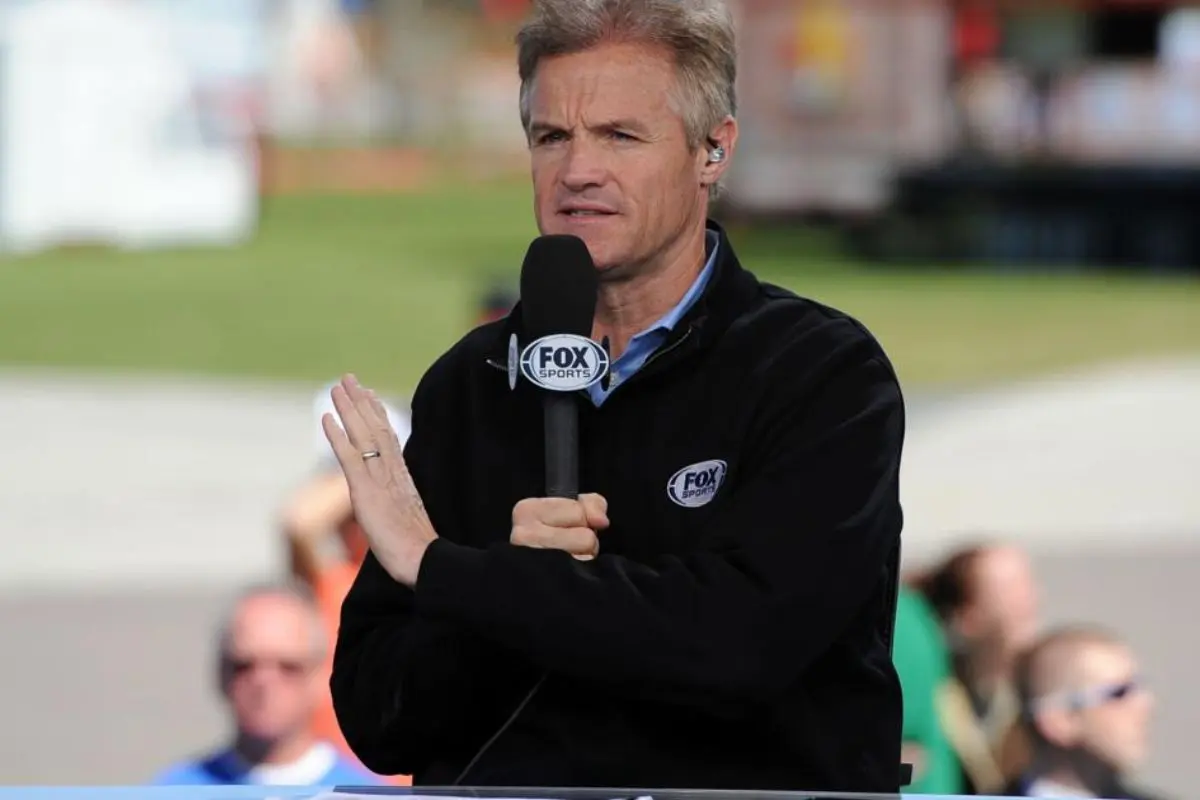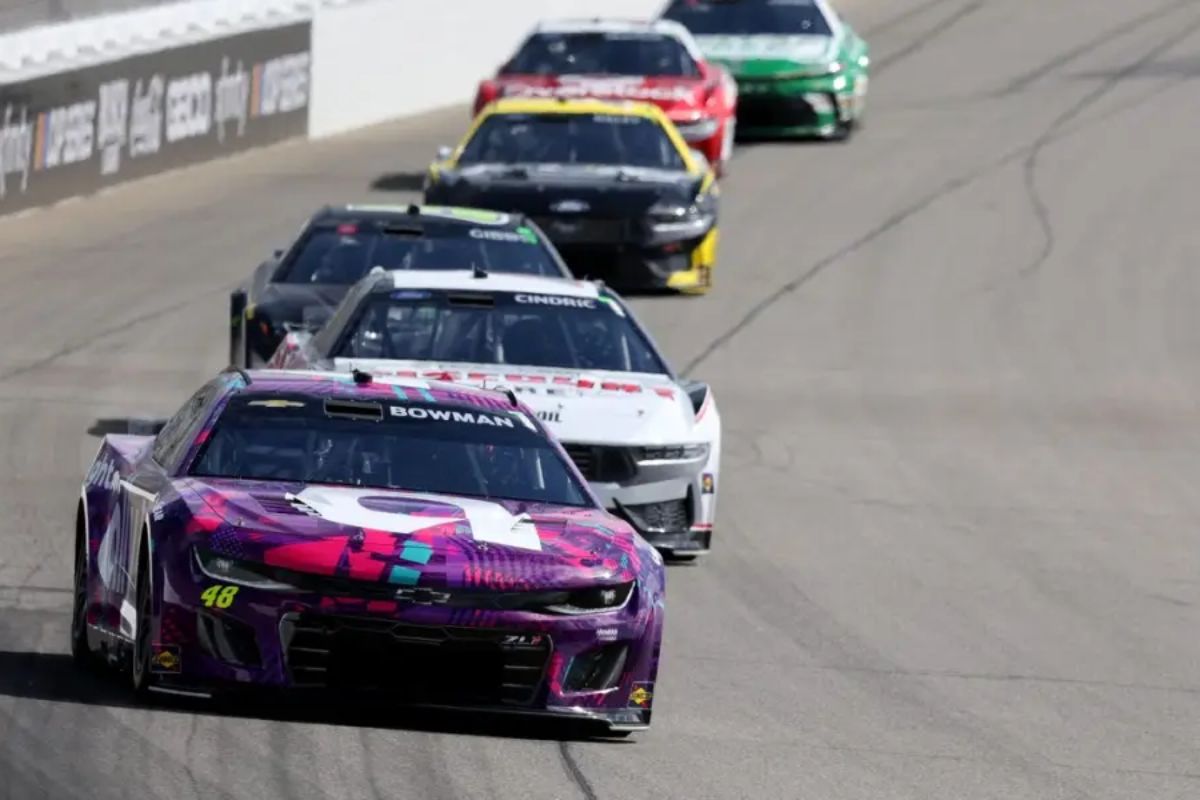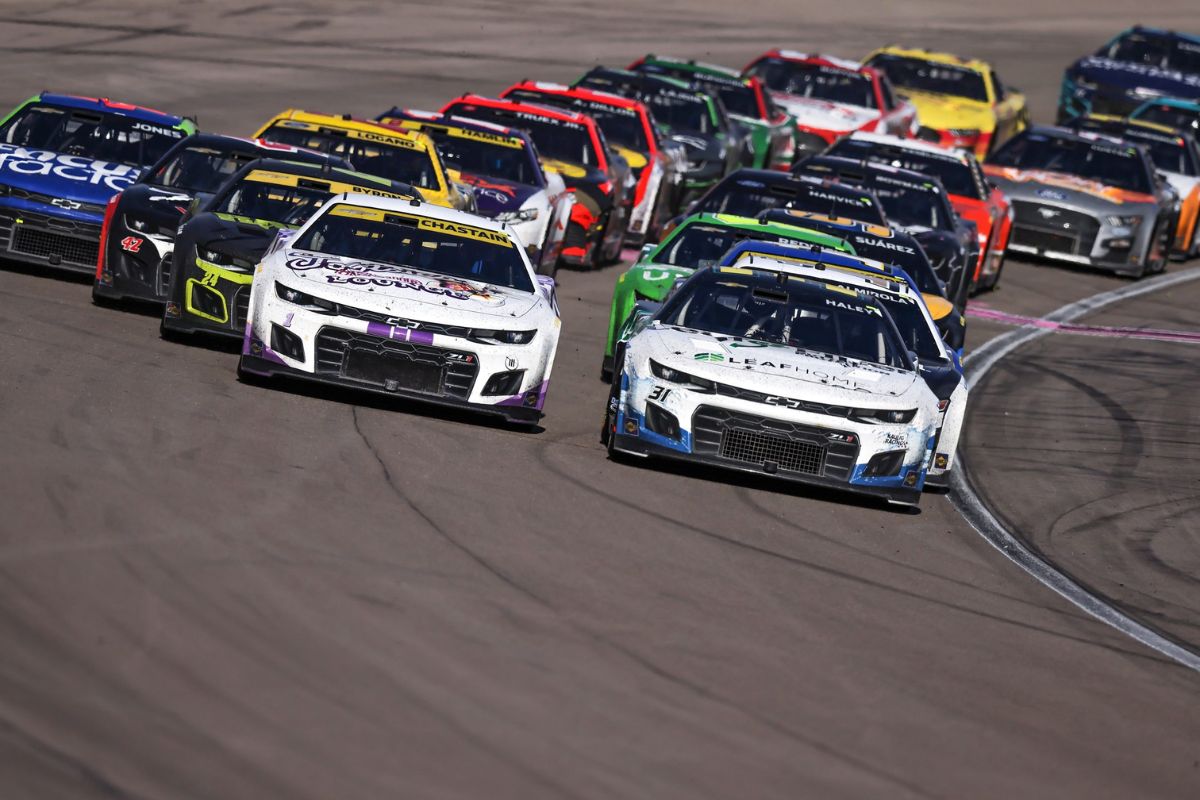Kenny Wallace Slams NASCAR’s Shark Fins: Kenny Wallace‘s recent critique of NASCAR’s shark fins post-Daytona wrecks raises important questions regarding the efficacy of current safety measures in the sport. By highlighting incidents like Corey LaJoie‘s flip, Wallace emphasizes a critical failure in addressing the underlying physics of high-speed racing. His call for a thorough re-evaluation of safety protocols suggests a need for deeper innovation rather than superficial fixes. As the conversation around driver safety evolves, it prompts a broader examination of what changes might genuinely protect athletes in the face of escalating risks.
Key Highlights
- Kenny Wallace critiques NASCAR’s shark fins, asserting they fail to mitigate the physics of high-speed crashes, particularly after recent Daytona incidents.
- He emphasizes that the design of shark fins does not effectively prevent vehicles from flipping during multi-car collisions.
- Wallace highlights the need for innovative safety measures, urging NASCAR to reconsider its current protocols in light of ongoing safety challenges.
- His skepticism reflects a broader concern among drivers regarding the limitations of existing safety technologies and their effectiveness in real racing conditions.
- Wallace calls for collaboration among engineers and drivers to develop comprehensive solutions that address the complexities of racing physics.
Failure of NASCAR’s New Safety Measure
Despite NASCAR’s efforts to improve safety measures, the recent implementation of the shark fin has proven to be ineffective in preventing serious accidents on the track. Designed as an air deflector mounted above the right side window, the shark fin aimed to reduce the incidence of blow-over crashes, a critical concern in stock car racing. However, subsequent evaluations, including wind tunnel testing, have revealed that this innovation does not address the fundamental physics of high-speed collisions.
The shark fin’s inability to prevent Josh Berry’s roof-first crash during the 158th lap highlights a glaring shortcoming in NASCAR’s approach to safety. Although it played a role in mitigating Michael McDowell’s flip with ten laps remaining, its limited efficacy raises questions about its general effectiveness as a safety measure. The disparity in outcomes emphasizes that while certain scenarios may benefit from such devices, they cannot universally safeguard drivers against the perilous forces encountered in racing.
This situation prompts a critical analysis of the methodologies employed in developing safety improvements. NASCAR’s reliance on isolated solutions like the shark fin may obscure the need for a more thorough strategy that addresses the multifaceted nature of racing accidents.
Kenny Wallace’s Concerns on NASCAR’s Safety Advancements
Kenny Wallace has voiced considerable concerns regarding the limitations of NASCAR’s safety advancements, particularly because of recent incidents that highlight the persistent risk of flipping during races. Despite the introduction of the Next-Gen car and innovations such as shark fins, Wallace remains skeptical about their effectiveness in preventing cars from overturning in critical situations. He referenced Corey LaJoie’s frightening incident at Michigan International Speedway as a clear reminder of the inherent dangers that still exist, emphasizing that even the latest technologies cannot eliminate the possibility of cars flipping.
The shark fins, designed to improve vehicle stability, were implemented to address this very issue. However, the recent flip of Josh Berry during a critical moment in a race raises notable questions about the reliability of these safety measures. Wallace pointedly remarked that regardless of technological advancements, there will always be scenarios where the laws of physics take precedence.
“Dale Jr and myself, we both said cars are going to flip. I still believe NASCAR racecars are going to flip. You’re just not going to prevent angle of the dangles all the time. Wallace said angles of the dangles. Phrase of the day. Angles of the dangels. So there’s going to be times when you’re not going to stop physics, okay? However, Josh Berry, again, they’re going to flip. I get that.” – (wallace)
His assertion, represented in his phrase “angles of the dangles,” highlights the complexity of controlling a vehicle in high-speed, dynamic environments.
Wallace’s perspective reflects a broader concern within the NASCAR community about the adequacy of current safety measures. While advancements are commendable, the reality remains that they may not fully mitigate the risks associated with competitive racing.
NASCAR’s Ongoing Safety Challenges
How can NASCAR effectively address the ongoing safety challenges that have emerged with the introduction of the Next-Gen car? The recent multi-car incidents during the Coke Zero Sugar 400 serve as a pronounced reminder of the critical safety issues that afflict the series.
While it is fortunate that drivers like Corey LaJoie and Josh Berry escaped injury, the propensity for Next-Gen cars to go airborne raises considerable concerns that warrant immediate investigation. The fact that these incidents are not isolated suggests a systemic issue that must be thoroughly examined.
NASCAR’s current approach, including the implementation of air deflectors, has proven inadequate in mitigating blow-over crashes. This raises questions about the effectiveness of quick fixes that often conflict with the fundamental laws of physics. A deeper, long-term strategy is imperative.
This necessitates collaboration with engineers, drivers, and safety experts to redesign elements of the car that contribute to aerodynamic instability.
Moreover, as the playoffs approach, the stakes for drivers intensify, increasing the likelihood of more severe incidents on the track. NASCAR must prioritize establishing robust safety standards that extend beyond temporary solutions.
The introduction of the Next-Gen car should be an opportunity for groundbreaking change rather than a regression into dangerous practices. Ultimately, a commitment to enhancing driver safety through rigorous testing, informed design changes, and proactive measures will help restore confidence in NASCAR’s ability to protect its competitors while maintaining the thrilling nature of the sport.
Michael McDowell’s Perspective on Safety Implications of the Next-Gen Car
Numerous drivers have voiced their concerns regarding the safety implications of the Next-Gen car, and Michael McDowell’s perspective adds a crucial dimension to this ongoing dialogue. As a seasoned competitor in NASCAR, McDowell articulates a subtle understanding of the aerodynamic challenges posed by the car’s design. He remarks on the limited data available regarding the effectiveness of air deflectors, emphasizing that wind tunnel tests do not accurately emulate the complexities of racing in a pack. This insight highlights a considerable gap in empirical evidence, which could inform better safety measures.
“We got a tiny little bit of information, but even that in a wind tunnel by itself isn’t a real indicator of what it will be like in the pack. I don’t think anybody knows. I think everybody is taking their best guesses. I don’t think it’s gonna be terribly different, but there might be some positives from it, too. We’ll see how the cars suck up.” – (McDowell)
McDowell’s hesitance to predict the definitive impact of these aerodynamic features reflects a broader uncertainty within the racing community. He acknowledges that while some benefits may arise from the new design, the real-world implications remain largely theoretical. The recent crashes at Daytona and Michigan serve as glaring reminders of the inherent dangers of high-speed racing, particularly when vehicles become airborne, as evidenced by Ryan Preece’s harrowing experience.
“When guys are caught off guard or just lose it, it’s because there is a situation that they haven’t been in before, so with this deflector, I’m sure there will be some of that.” – (McDowell)
Moreover, McDowell’s commentary highlights the vital need for ongoing dialogue and research into the safety protocols associated with the Next-Gen car. As NASCAR continues to innovate, it is imperative to prioritize driver safety while balancing competitive performance.
Future of Safety Measures in NASCAR
As NASCAR looks to the future, the emphasis on enhancing safety measures has never been more vital. The recent incidents at Daytona, where cars experienced airborne crashes due to high-speed collisions, highlight the urgent need for innovation in safety protocols.
Kenny Wallace’s remarks emphasize a fundamental truth: as long as cars race at these velocities, the laws of physics will dictate outcomes, including the potential for catastrophic accidents.
To mitigate these risks, NASCAR must focus on refining existing technologies, such as air deflectors, which can influence how cars behave in challenging situations. Wallace suggests that unexpected scenarios can catch drivers off guard, and improving aerodynamics could play a notable role in preventing such occurrences.
The sanctioning body faces a dual challenge: enhancing current safety features while also exploring novel designs that could revolutionize vehicle stability. Reflecting on the advancements made since the tragic loss of Dale Earnhardt Sr. in 2001, it is evident that NASCAR has made strides in safety. However, the evolving landscape of motorsportS demands continuous adaptation and enhancement.
News in Brief: Kenny Wallace Slams NASCAR’s Shark Fins
The concerns raised by Kenny Wallace regarding NASCAR’s shark fins highlight a critical need for a thorough reevaluation of safety measures within the sport. The incidents at Daytona serve as a clear reminder that superficial design modifications are insufficient in addressing the fundamental principles of physics involved in high-speed racing.
A commitment to creative, evidence-based approaches to driver safety is vital to improve protection and reduce the risk of severe accidents in the future.
ALSO READ: Kenny Wallace Shares Dale Sr.’s Winning Secret: “Second Places Will Win You a Championship”



